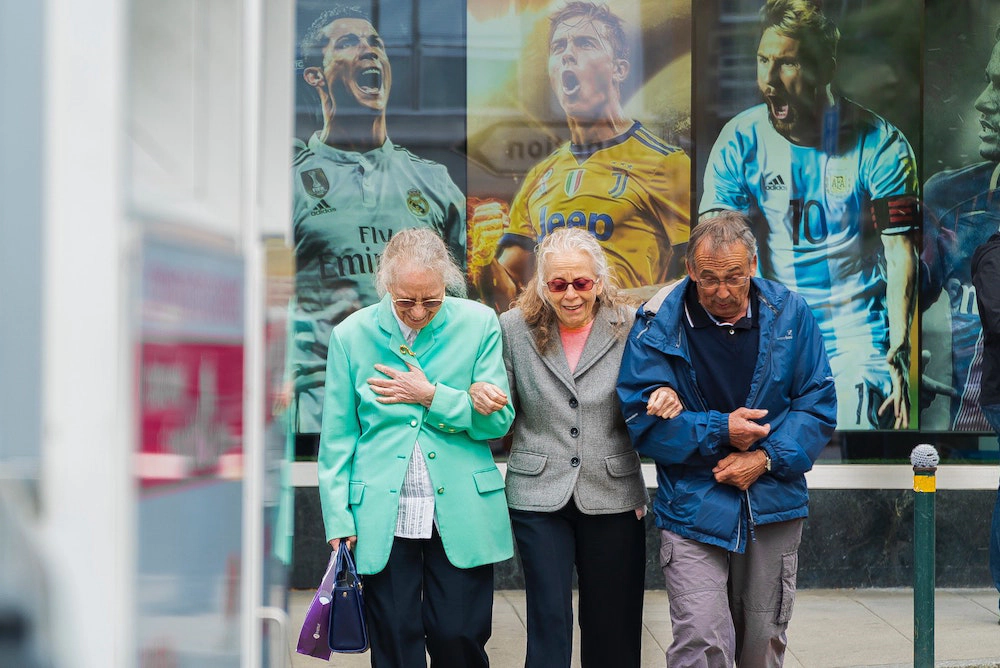governance
Customer-Centricity and Creating Better Social Outcomes
Published: April 5, 2018
Read Time: 4 minutes

How important do you think customers are for your not-for-profit (NFP) organisation to achieve its objectives? Can you see the relationship between customer-centricity and your organisation’s goals to create better social outcomes? In this article, I invite you to explore the concept of customer-centricity in NFP organisations, understand its values, as well as present some case studies to demonstrate how this approach can help your organisation to create better social outcomes.
Firstly, we need to align our understanding about ‘customers’ in NFP organisations and ‘customer-centricity’ which we will refer to in this article.
Most NFP organisations have two main customers: [1] the beneficiary customers (i.e. those who receive the organisation’s benefits or services) and [2] the supporter customers (i.e. donors who provide support or funding). Both play important roles in an organisation’s journey to realising its objectives.
Customer-centricity refers to the strategy of putting customers front and centre in the organisation’s strategy and activities. Customer-centric organisations are designed from the outside in: defining who the customers are, what they care about, and how they interact with the organisation. It is the customers’ experience that then aligns the organisation internally.
The better we understand the organisation’s beneficiary customers, the better we are in planning and delivering services to fit their needs in order to create better social outcomes. I usually recommend that organisations first understand the following about their beneficiary customers: segmentation, needs, expectations, service utilisation, and existing social outcomes generated. Having done the research to gain useful insights into these issues, the organisation can then start to tailor their strategy to shape a fruitful customer experience that best fits the needs of the beneficiary customers.
The approach is similar with supporter customers. We need to understand them first and then tailor our strategy to best fit their experience. With supporter customers, I recommend that organisations understand the segmentation, motivation (the reason why they support the cause and the organisation), current experience (how they currently provide their support and their feelings about it), preference (how they like to be engaged) and expectation (what outcome they would like to see from their contribution).

To have a look at how these concepts work, I am going to share with you some real-life examples from Hoshizora Foundation, a not-for-profit organisation that provides scholarships and education support for underprivileged children in Indonesia.
The beneficiary customers of Hoshizora Foundation are the underprivileged children who receive scholarships that help to further their education. Through observation and research of its beneficiary customers, Hoshizora understands that financial assistance alone is not sufficient. Social and moral support for these children and their guardians plays a significant role, particularly in reducing the rate of high school dropouts. Based on this understanding, Hoshizora provides information sessions about the options and benefits of high school level education. Highlighting the options for children to attend vocational schools where they can learn general knowledge similar to high school level as well as develop practical skills depending on their chosen field such as agriculture training, agribusiness, and bookkeeping skills, has proven to be effective. At times, meetings with selected children and their guardians were conducted which has resulted in a decision for the child to continue their education.
The supporter customers of Hoshizora Foundation are the scholarship donors. To find out what makes the donors tick, throughout the learning process Hoshizora considers the type of donor and customises its strategy to best suit the donor’s needs, preferences and expectations. A simple but powerful example was the shift of communication from mainly email to instant messaging applications for some donor types. The responses, particularly from the millennial donors, were much higher when they were contacted via an instant messaging application as compared to regular email. In this case, more effective communication with this group of donors resulted in better donor engagement and retention.
Good implementation of customer-centricity will help organisations create better social outcomes. Start embedding it into your strategy, experience the benefits and see how it helps your organisation create better values for the communities and causes that you support.
Share this Article
Recommended Reading
Recommended Viewing
Author
-
Co-Founder
Hoshizora Foundation
- About
-
Wenda is the co-founder of Hoshizora Foundation, an education not-for-profit, and currently serves as the Board Chair. Based in Sydney (Australia), she is a also a Director for a global consulting firm leading teams to provide services on ESG, risk management, corporate governance, strategy activation, and business model management. She is passionate about social impact and advising several ESG and community investment programs globally. Being trilingual in English, Japanese and Indonesian, Wenda has given lectures, workshops, and developed knowledge-sharing programs for local and global institutions.
Found this article useful or informative?
Join 5,000+ not-for-profit & for-purpose directors receiving the latest insights on governance and leadership.
Receive a free e-book on improving your board decisions when you subscribe.
Unsubscribe anytime. We care about your privacy - read our Privacy Policy .










